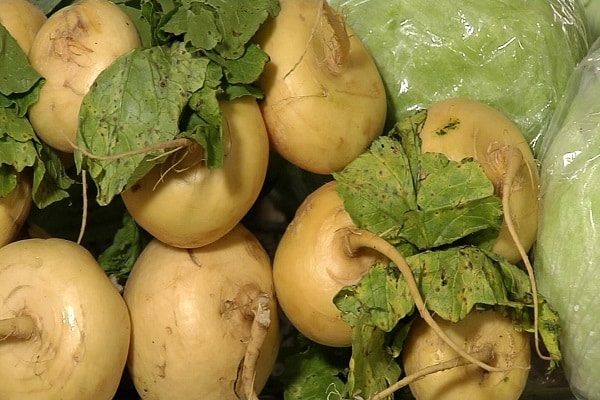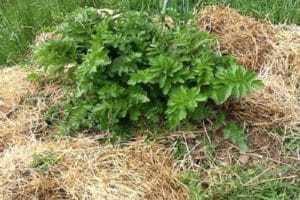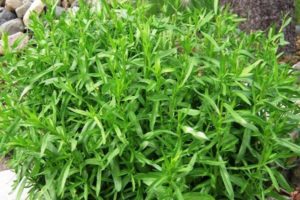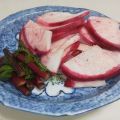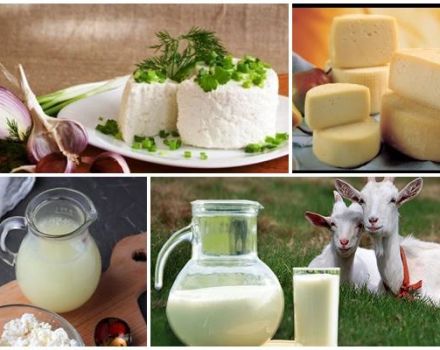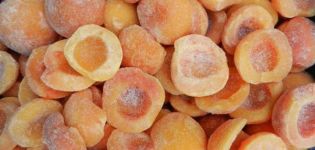TOP 25 of the best varieties of turnips for open ground and winter storage, description and properties
A vegetable that has been planted and loved by the people for centuries is now practically forgotten: they know it only from a folk tale, and even then not everyone. Different varieties of turnip, traditionally grown in Russia, gradually ceased to be cultivated after the purposeful introduction of foreign potatoes. Earlier, turnips in steamed, boiled and raw forms constituted the basis of the diet of peasants in different provinces, remaining a nutritious and useful product.
Turnip and its features
The turnip, a truly magical vegetable, contains vitamins, macro- and microelements. It is also very tasty in any form:
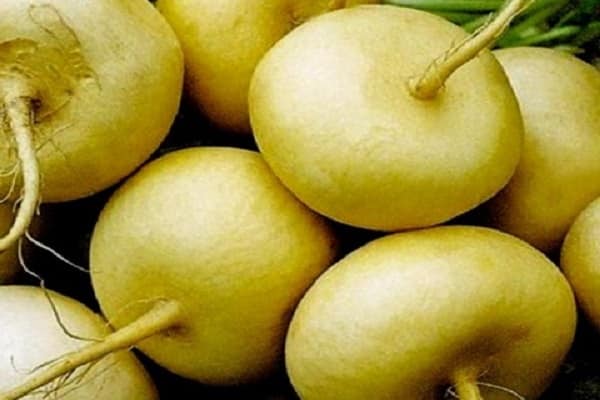
- raw;
- boiled;
- salty;
- pickled;
- in porridge and hot.
The rhizomes contain sugar, which is why they are so sweet. There are vitamins of group B, C, E, PP, beta-carotene, compounds of potassium, calcium, phosphorus, iron, phytoncides. Protein is negligible, so the product is ideal for dietary nutrition.
Turnip will be useful for people experiencing problems with peristalsis, it has a urinary, wound healing and antiseptic effect. In terms of the content of natural dissolved sugar, turnip can successfully compete with apples, even the sweetest ones. Sometimes there is a slight bitterness, like in a radish, this is not considered a deviation from the norm.
Important. Turnip needs almost no special care when growing. In the first year, it develops basal leaves and a future fruit, and in the second year, the stem with inflorescences is pulled out and the seeds ripen.
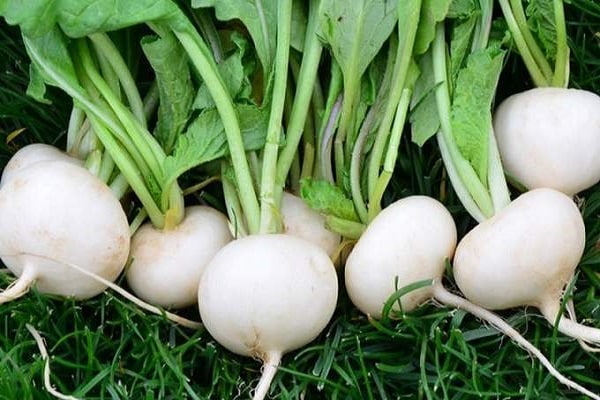
According to the growing season, the culture is clearly divided into early, middle and late varieties. They differ in yields, susceptibility to frost or suitability for storage of fruits, but almost all of them retain their characteristic, sometimes slightly bitter, sweet taste. All types of turnips are juicy, with a moderately hard core and a not very thick top layer (rind).
Some are grown exclusively for greens (top), others - as a filling for salads, vegetable stews, meat dishes.
The healing and useful properties of turnips
Turnip is truly a royal root, Russian ginseng, endowed with excellent taste and dozens of useful properties. Not everyone knows that this root vegetable is successfully used to treat diseases and ailments:
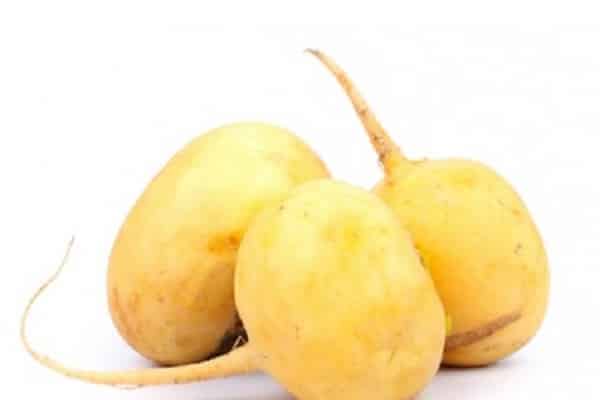
- restores and normalizes metabolism;
- cleans blood cells from the accumulated "debris";
- helps to get rid of joint pain;
- stabilizes the activity of the stomach, intestines;
- copes with the intoxication of the body, removes toxins;
- strengthens damaged bone tissue;
- improves the functioning of the respiratory system (including with asthmatic disease);
- relieves stones, sand in the genitourinary system;
- treats dermatitis and rashes;
- relieves acute attacks of toothache, bleeding gums and prevents the destruction of enamel;
- great for prevention of colds, flu.
Turnip is a supplier of useful substances in the production of medicines, it is used in folk medicine. The juice is a natural tonic for the face, replaces any patented product produced by cosmetic concerns. There is no better remedy for dry skin in need of care.
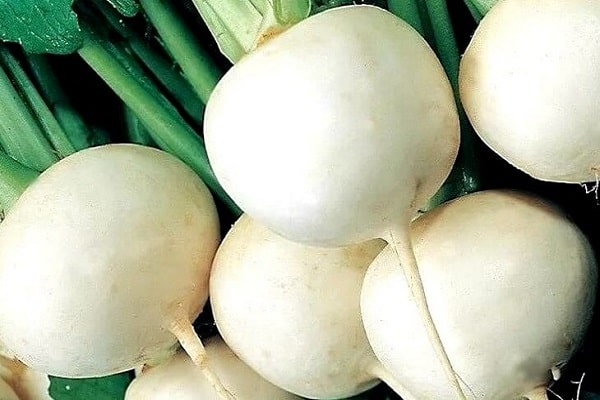
Turnip is not just a vegetable
Turnip belongs to the cruciferous family, being a relative of cabbage, mustard, wasabi, but not at all like them in taste. The development period is divided into 2 parts: the first year and the second year. In the initial stage, the formation of rhizomes and leaves (rosettes) occurs, in the final stage, a stem with peduncles grows and seeds ripen.
Turnip has always been valued for its unpretentiousness to growing conditions: it grew on a variety of soils, from sandy loams and loams to black soil, bringing strong and juicy fruits to humans. In Russia, many varieties are grown simultaneously, with different yields, ripening rates, and fruit shape.
There are no two turnips of the same color: there are yellow, white, purple, reddish, black. Most often, the lower part does not sink too deeply into the ground - about two-thirds. The weight of the ripened root ranges from 10 grams to half a kilogram, special large-fruited varieties have been bred that consistently bring juicy and strong turnips.
The bitterness in taste is not due to a defect in the species, but to a lack of watering: this is how the plant reacts to a lack of moisture. In terms of sugar content, turnip has no equal, it also contains vitamins useful for humans, and compounds of trace elements. If in Russia this vegetable was traditionally grown "on roots", then exotic species that came from Asia are used as a supplier of crispy green foliage saturated with vitamin C.

Not only for food, but also for treatment
Turnips are eaten raw, baked, boiled, fried. Combine with fish and meat, and also salted and pickled. Popular connoisseurs consider the vegetable a ready-made source of medicines for a wide range of diseases. It is recommended for chronic gastrointestinal problems, overweight, joint inflammation, asthma, urolithiasis and others. Turnip juice produces a natural tonic for the skin of the face, it also nourishes the hair, making it healthy, shiny and silky.
Sweet varieties
Varieties with a high sugar content are healthy and productive. A special diet made up of sweet root vegetables will allow you to quickly and effectively defeat excess kilograms and centimeters, because the pulp is well absorbed by the body, without adding “extra” calories.
Golden ball
The variety got its name from its yellowish, globular rhizomes. The palate is soft, delicate, with pronounced sweetish notes. The ripening period is medium. It is widely used in non-traditional methods of treatment.

Snow White
The exotic Snow White is native to Japan and is an early variety. The growing season is about one and a half months. Root crops are characteristically round and snow-white, juicy and dense inside. It is consumed fresh, used for cooking. Leafy greens are used for salad dressing and snacks. The variety stands out for its resistance to cold and low light immunity.
White ball
It belongs to mid-season varieties, brings turnips weighing up to half a kilogram, white, very juicy and soft, completely devoid of bitterness. The leaves contain ascorbic acid, so they are used to make salads. Like other species, it is grown from seeds, germination is normal.
Harvest
There are separate, high-yielding varieties, which are distinguished by a stable yield of fruits of large mass and a guaranteed amount. Sometimes they additionally have protection against low temperatures or specific taste qualities.
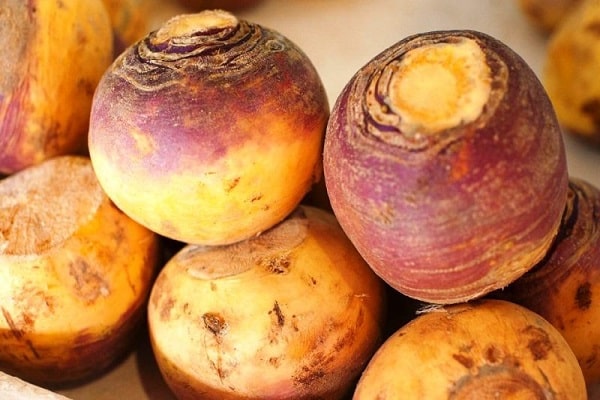
Snow Maiden
It is a typical salad variety, ripens early and produces small, strong white turnips. The only drawback is poor storage: the fruits must be eaten as soon as possible. Grown in open ground, under glass or film (in a greenhouse). Sowing is allowed in several separate stages, from spring to mid-summer.
Burnt sugar
An unusual variety that has nothing to do with burnt sugar. It brings together consistent quality, quick ripening and undeniable benefits from the point of view of medicine. The root vegetable is specifically elongated, oblong, covered with a black skin on the outside. The pulp is firm and crispy, juicy... Stores well.
Grandma
When breeding the species, the breeders reasonably combined high yields and a short growing season. Unpretentious, can be grown on different soil mixtures. Gives root vegetables with golden flesh, rich sweet taste. Turnip is rich in trace elements, keeps well after harvest, is used raw and processed.
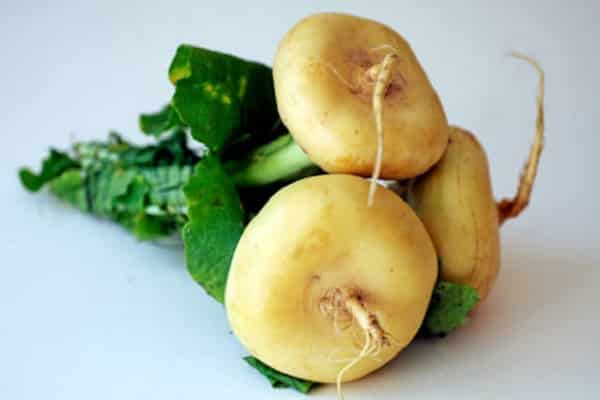
Tokyo
Non-standard, "leafy" variety, one of the fastest ripening. The rosette is formed from rounded oval leaves. Rich in vitamins, greens are juicy, slightly sour. Differs in increased moisture consumption and resistance to low temperatures.
Petrovskaya 1
An ancient look, was previously widespread in Russia. It ripens within 2 months after sowing. The fruits are rounded, with a pale green top. Allows long-term storage. The variety is distinguished by high yield, excellent taste.
Large-fruited
These species are distinguished by strong, rather large fruits of different colors, with good storage during the harvest saving period.
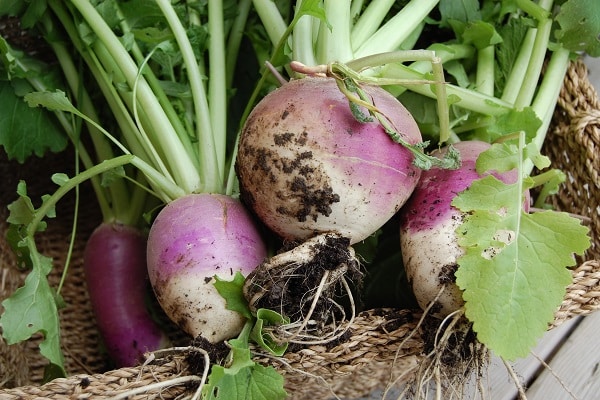
White Night
A type of turnip native to the Czech Republic. Mid-season in terms of growing season. The fruits are white, about two-thirds buried in the ground, and weigh about 0.5 kilograms. The pulp is juicy inside, without characteristic hard inclusions, somewhat similar to a garden radish.
Golden ball
Another mid-early appearance, the color of the fruit is bright yellow, with a shiny skin. The weight of one turnip is up to 400 grams, the taste is mildly sweet, with a juicy core.
Russian size
The variety seems to have descended from the pages of a collection of Russian fairy tales: massive, heavy fruits weigh up to 2 kilograms. At the same time, they retain all the useful properties of ordinary turnip - sweetness, moderate hardness, juiciness, characteristic "turnip" flavor.
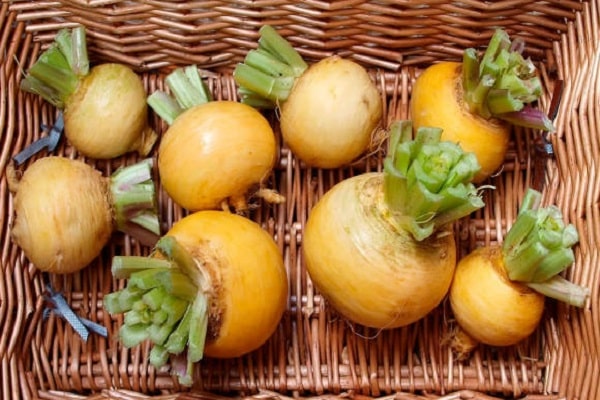
Snowball
An early variety with rounded, white roots. The weight of one turnip ranges from 90 to 200 grams, the taste characteristics are at the level of the best specimens. Turnips are usually located shallow in the ground, they are easy to pull out, and they are well stored after harvest.
Early ripening
This category contains varieties of early ripening, which remain the most popular among gardeners.
Geisha
Exceptionally lettuce, stem-resistant, with white and round fruits weighing up to 200 grams. The whole plant tolerates cold and lack of light well. The foliage is devoid of any pubescence, it is an excellent option for spring vitamin salads. After the roots ripen, the turnip yields a tasty fruit with a slightly noticeable bitterness. It is poorly stored: the early turnip variety is intended for the summer period, and not for harvesting for winter storage.
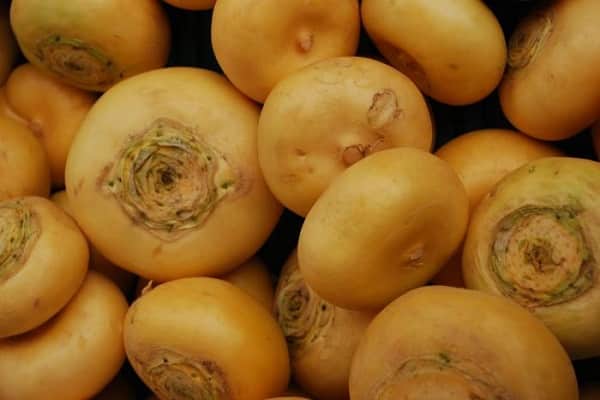
Milanese pink
A fast ripening species, besides very fruitful.The fruit is flat, with a smooth skin and a pleasant-tasting pulp. It is considered resistant to garden diseases and pests. Seeds with good germination - sprouts hatch for 3-5 days. The plant easily tolerates small frosts, the optimum temperature for its development is 15-18 ° C. A bit picky about light and watering, but tolerates poor (sandy loam and loamy) soils.
Grandfather
One of the earliest varieties: fully ripens in 50 days. The shape is spherical, with a peel of 2 colors - purple and white. Turnip is good for eating raw, taste is emphasized, sweet. Cooking and even salting is allowed, the fruits contain many vitamins and minerals. Grown in the open field (not in the greenhouse).
Glasha
Ripens early - in a month and a half, bringing flattened white roots weighing no more than 100 grams. Thanks to this shape, the turnips are easily pulled out during harvesting. The taste is excellent, the pulp is sweet and juicy. It is used in salads, for homemade pickles, boiled, steamed and stewed. Can be stored for a long time (in winter).
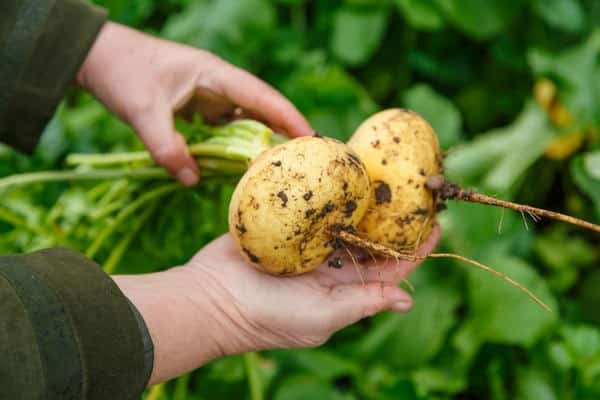
May yellow
An early species with a full growing season of 75 days. The color of the inner core fully corresponds to the name - bright yellow. At the point of attachment of the corolla of the leaves, it is slightly greenish, the rest of the fruit is white. It ripens quickly, the taste is soft, sweetish-delicate.
Granddaughter
This species also belongs to the rapidly maturing - in 2 months after sowing, round, light weight, turnips appear. The skin is yellowish, smooth. Eat raw, in salads. Saving in the cellar or basement in the winter is allowed.
Mid-season
Mid-season varieties occupy an intermediate position between early and late ones. They do not have a very long, but also not particularly fast ripening period, which allows harvesting fruits with good taste and presentation.

Dunyasha
Dunyasha has tasty and vitamin-rich roots that are successfully used for dietary nutrition. The period for reaching full ripeness is 70 days, turnips are obtained in size in size, weighing up to 200 grams each. On the cut - yellowish, sweet, soft taste. There are no coarse and tough plant fibers. The variety is not afraid of shade and frost, it is stable against premature flowering.
Moon
In this species, the ripening period rarely exceeds 80 days, the fruits are round, with a soft and thin peel. Turnips, as for selection, are juicy and sweet, well stored in winter and autumn.
Suitable for eating raw, especially during winter. Cold resistant.
Nurse
Another solid "middle peasant" that yields a harvest after 3 months from the moment of planting the seeds. Fruits ripen, weighing up to 250 grams each, tender, with a large amount of vitamins and microelements. Great as a supplier of salad toppings. Cooked, fried, stewed, baked in different forms. It is successfully combined in dishes with other vegetables, fish and meat.
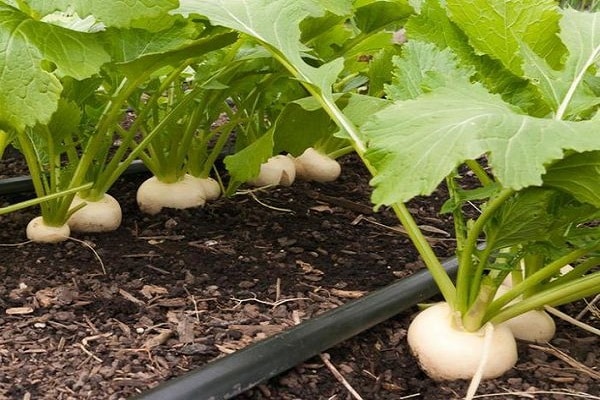
Gribovskaya
The turnip of the Gribovsky variety ripens for 60 days, bringing large yellowish roots with a dark purple rim at the point where the top is attached to gardeners. It is also very tasty, well preserved, and is not afraid of frost.
Late
Late species include those whose ripening period is usually 90 days or more. Many of them in their taste characteristics are not inferior to the early ones, even surpass them.
Comet
The name was promoted by the specific elongated shape of the rhizome with a thickened part at the bottom. In addition, the Comet has excellent characteristics, matching from fruit to fruit: weight, size and taste. The average ripening period is 80 days, the weight of one turnip is up to 120 grams.

Orbit
This variety can be recognized by its regular spherical root crops, which ripen in 4 months.The turnip is large, white, the weight of one fruit reaches 500 grams. A very tasty look, which partly compensates for the ripening duration. Well tolerates storage in a cellar or basement in the winter.
The best varieties of turnips
Among the variety of useful root crops, experts distinguish the best ones in terms of taste, frost resistance, endurance, fruit size and yield, ripening time. It is also important to choose a species for the region in which it is planned to be cultivated: this will affect the specific variety and the properties required for normal cultivation (shade resistance, the need for fertilized or poor soil).
The concept of "best grade" obviously refers to a subjective assessment, because it is impossible to take into account all the parameters of the garden culture, sometimes contradictory, in one concrete form. For example, early turnips are inferior to medium (and late) in taste, but they will provide a set of vitamins to the table in the shortest possible time. And a special species grown "on top" (for spring salads) is incorrect to compare with root vegetables.

Important. The best will be the variety that, in specific conditions, will allow you to get a guaranteed, stable harvest.
For the Urals
In the Ural region, varieties are cultivated without problems: Burnt sugar, Petrovskaya 1, Gribovskaya local, May yellow green-headed, Milanskaya white red-headed. The type of burnt sugar can be easily distinguished by its specific elongated shape (it resembles a plump black sausage). Outside, the turnip is covered with a dark skin, inside - a white and sweet, appetizing crunchy core.
The variety is characterized by high yield and good keeping quality. From its pulp, you can prepare delicious salads, use for baking. The sown seeds germinate in 3-5 days, the plant itself easily tolerates short-term cold snaps up to +4 ° C. Loves light, fades in the shade. Susceptible to soils - dense clay is not categorically suitable, but on sandy loams and loams it gives a good harvest.

To describe Petrovskaya 1, 2 definitions are briefly used: pleasant in appearance, tasty inside. It belongs to the oldest species of Russian turnip cultivated today. Prefers light soils, sun, moisture-loving, rises 3 days after planting.
Gribovskaya local refers to a modification of an old variety with a purple fruit color. Adapted to the conditions of the Urals, gives a steady harvest. May yellow green-headed quickly ripens, brings not very much, but in sufficient quantity, flatish, rounded turnips. Taste remains its main advantage: bitterness is completely absent.
Milanese white red-headed is a species of foreign origin; fruits are flattened with a white top. Not suitable for long-term conservation, not resistant to garden diseases.
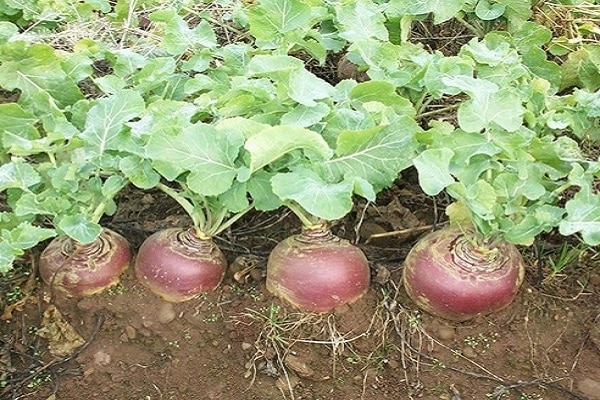
For Siberia
Siberia is close to the Urals in climatic conditions, so the same varieties can be grown there. Forget about early species right away: only specially adapted modifiers that are not susceptible to frost and low average annual temperatures.
For the Moscow region
Turnip is not for nothing considered an unpretentious plant, perfectly adapted for growing in the harsh realities of Mother Russia. Our ancestors knew about this, preferring a juicy and nutritious root crop to poorly established overseas potatoes.
In the Moscow region, Milanskaya white red-headed, Petrovskaya-1, May yellow green-headed, Snegurochka, Geisha, Yubileinaya-85 grow well. All these varieties are known to gardeners, they have been cultivated for a long time in personal and summer cottages, bringing a stable harvest.
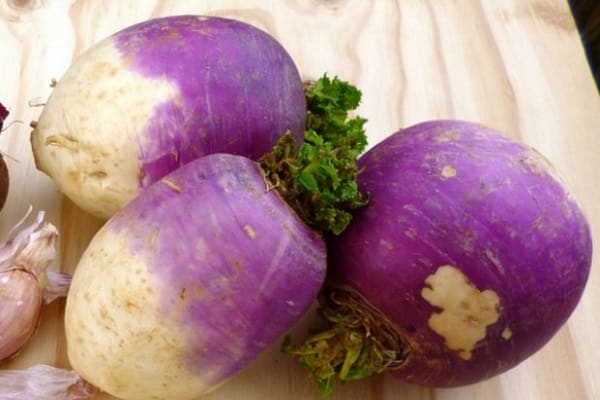
For other regions
For cultivation in other climatic zones of the Federation, species are chosen that have passed the test of cold and drought, scarce soils and pests. In this sense, preference is given to Russian varieties that are optimally adapted to local specifics.
When to sow a turnip
When determining specific sowing dates, they are guided by their own needs - when a vegetable is expected on the table in the form of a salad or a baked snack. To pamper yourself with the sweet and juicy pulp of turnip in summer, sowing begins in early spring, as soon as the ground is exposed and the weather is warm. If you do not follow this simple rule, then the hastily planted seeds will soon die, unable to withstand the night frosts.

A completely different procedure for winter harvesting: for them, the seeds are lowered into the soil in July, at the beginning of the month. In cold regions, the growing season is chosen according to the laws of nature, so that 85-90 days pass from the moment of sowing to harvest.
Choosing between early and late (middle) varieties, it is better to stop at the latter, then the root vegetables will not have time to outgrow and lose their delicate taste, sweetness of the pulp.
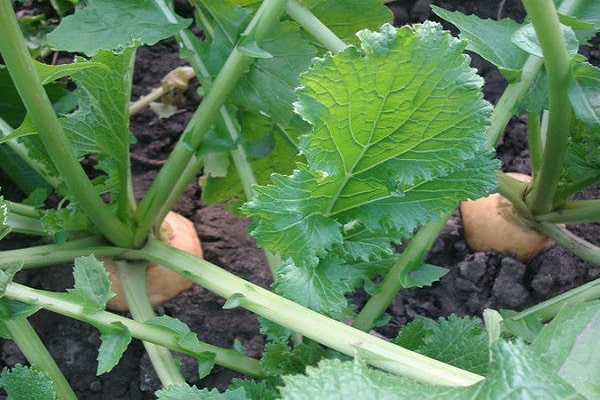
Important. Early ripening varieties are usually poorly preserved - a kind of retribution for urgency, but the late ones perfectly tolerate winter harvesting with subsequent storage.
The renewed interest in the culture, which has not been grown in large quantities for a long time, its unique properties make it possible to recommend turnips as the main sowing plant in the garden, along with potatoes, cabbage or tomatoes.
